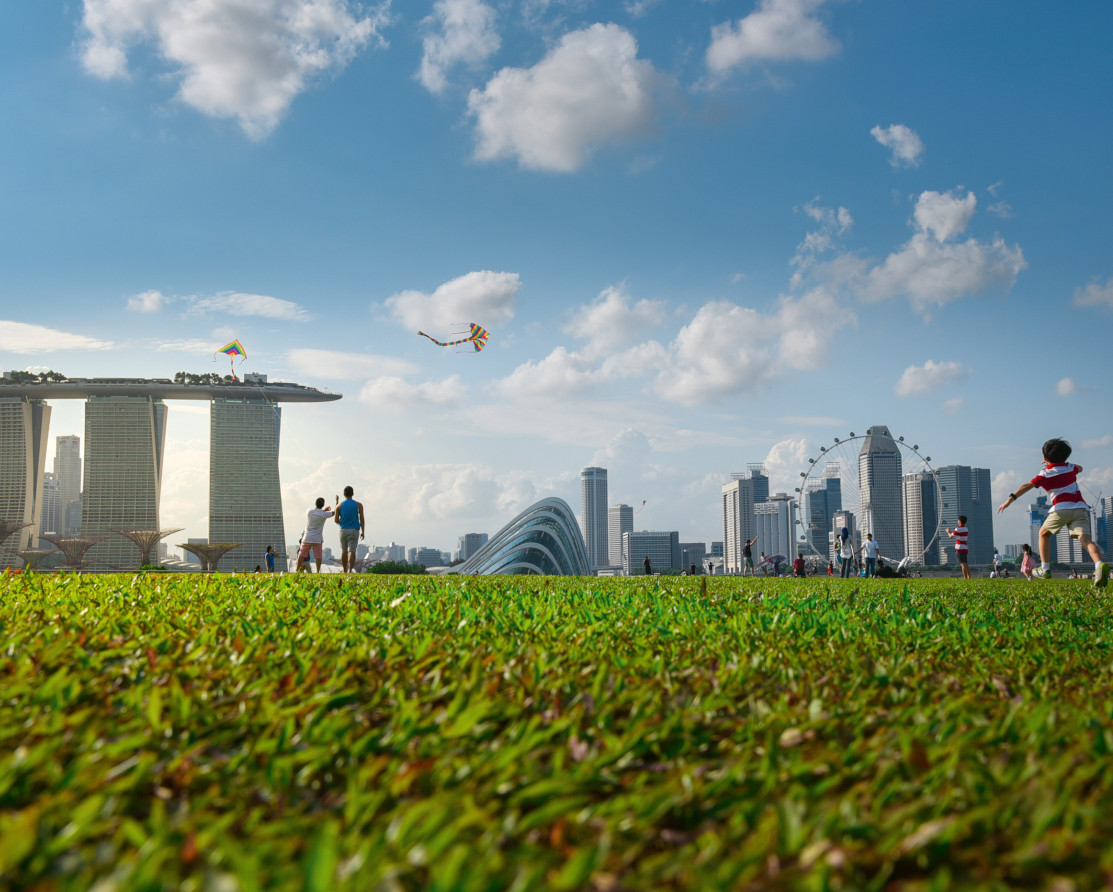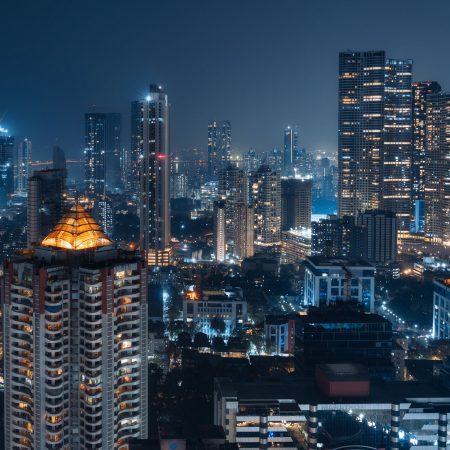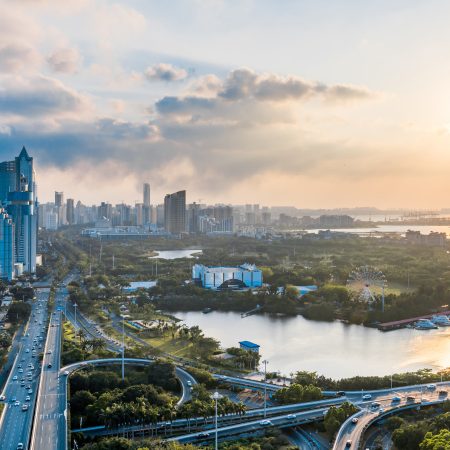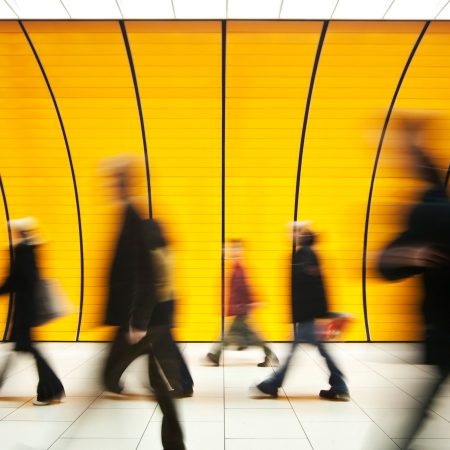In January, asset manager BlackRock acquired infrastructure fund Global Infrastructure Partners in a $12.5 billion deal.
The world’s largest asset manager knows an opportunity when it sees one. In this case, it’s an infrastructure investment gap predicted to hit $15 trillion by 2040.
Infrastructure investment is reaching an inflection point in 2024 as governments and businesses recognise the growing need for a new generation of future-proof facilities. These include green energy generation, water conservation, public transport links and digital connectivity solutions.
The need for investment
Infrastructure might provide a public good, such as clean water, or enhance economic activity, like a new port facility – or it can do both. But many such projects require a huge initial outlay for benefits that can take years to materialise.
In these circumstances, public money can sometimes only go so far. Private investment is often required to fill spending gaps. Some $120.6 billion of capital was fundraised for infrastructure investment in 2023 – 43% more than in 2013. Although, in common with other asset classes, infrastructure fundraising was down on 2022 levels, significant long-term appetite for the sector remains. An October 2023 Official Monetary and Financial Institutions Forum survey indicated that 40% of public pension funds are expecting to increase investment allocations to infrastructure in the next 12–24 months.
Growth in infrastructure fundraising, 1990 – 2023
Source: Savills Research using Realfin
Infrastructure projects create jobs – in both their initial construction and the businesses that spring up in their wake. These projects also increase mobility, commutability and access to services. Meanwhile, improvements to power grids and digital connectivity facilitate business expansion.
Infrastructure investment can also help countries meet climate goals, through green energy projects, upgrading existing infrastructure to reduce their carbon footprints and carbon capture and storage facilities, among many others. Blue/green investment, like better water management systems, can help mitigate the impacts of extreme weather.
Not all infrastructure is climate friendly, of course, but green projects are increasingly where governments and private investors want to allocate funds. In a Cornell University survey of institutional investors’ investment intentions, 40% of respondents said they were likely to commit more capital to renewable energy and transition projects over the next few years.
Real estate opportunities
The link between infrastructure spending and the development of real estate is clear. Well-connected business hubs attract skilled workers, leading to success and growth. New port facilities create export opportunities. Ultrafast broadband promotes expansion of the digital economy.
New infrastructure tends to draw in new businesses and workers, creating clusters. Where infrastructure leads, offices, warehouses, shops and residential developments usually follow.
Even in its early stages, a properly funded transport or energy project gives real estate developers and investors certainty, allowing them to press ahead with their own plans. For current and potential occupiers, infrastructure investment represents a show of confidence in their area.
The risks around investing in infrastructure tend to centre on its long-term nature – political and economic conditions can change markedly in five or 10 years, causing projects to be shelved, downgraded or run into financial problems. Investors and developers should also consider the risks posed by climate change when choosing where to allocate funds.
Infrastructure spend as a percentage of GDP
Source: Savills Research using Global Infrastructure Hub
Opportunities in developing countries
Such risks are unlikely to put anyone off, thanks to the sheer scale of infrastructure-related opportunities. That’s especially true in developing nations, which sometimes lack the basic necessities of daily life and economic activity. These countries tend to invest a higher proportion of GDP in infrastructure, giving investors multiple options for access to the market.
According to our research, six of the top 10 countries in terms of percentage of GDP spent on infrastructure are in Africa, three are in Asia and one in the Middle East. Investing in infrastructure in developing countries offers higher returns – albeit for greater risk.
In developed countries, infrastructure projects are often focused on replacing, upgrading or protecting what is already there, or promoting sustainability.
Wherever it takes place, infrastructure investing is not necessarily a passive activity. In many cases, expert investors are actively involved in projects, helping to make facilities more sustainable or efficient, and enhancing the value of their investment at the same time.
GREEN ENERGY AND GREEN TRANSITION
Dogger Bank
Dogger Bank, located off the north-east coast of England, will be the world’s largest offshore windfarm. Due to be completed in 2025-2026, its 277 turbines will provide enough green energy capacity to power six million homes.
In the construction phase, Dogger Bank’s use of local suppliers is likely to lead to the development of manufacturing and warehousing space, revitalising the local area. The finished project will support jobs in power stations and maintenance crews, while providing the sustainable power that homes and businesses need.
Northern Lights CCS
Northern Lights is a large-scale carbon capture and storage project in Norway. It takes carbon from the air near polluting industries’ chimneys at industrial plants and pumps it into depleted natural-gas reservoirs deep below ground.
Northern Lights uses shipping to transport CO2 to the storage area and pipelines to deliver it to subterranean storage. Other carbon capture schemes will use pipelines to transport carbon long distances. In either case, industries are likely to cluster around coastal areas for access to ports and pipeline terminals.
Rob Asquith, Director and Head of National Infrastructure Planning at Savills, says: “For ship-based transportation, the creation of a new bulk cargo sector will require real estate at the ports for the storage and loading of carbon dioxide.
“Enough CO2 has to be available to fill the ship when it arrives and thus it needs to be stored. In addition to the carbon capture plants, there’ll be a need for a liquefaction facility if the CO2 is not going to be carried via pipeline. Emitters will likely cluster around this infrastructure to ensure their carbon emissions can be efficiently combined with others’ and transported onwards to geological storage.”
DIGITAL
Mumbai and Chennai data centres
Digital infrastructure allows people and businesses to fully participate in the digital economy, but it can be difficult to keep up with demand. India already produces 1 trillion megabytes of data every day and some businesses struggle to access the capacity they need.
To alleviate the issue, two new “mega” data centres are under construction in Mumbai and Chennai. They will drive digital participation in India and link to 300 centres around the world.
Superfast data centres allow businesses to scale their operations at will, taking advantage of cloud, robotics, AI and other advanced technologies, and offer e-commerce facilities. It all drives growth. Digital infrastructure also encourages the economic development of more remote regions, leading to greater demand for homes and office space.
Brookfield/Intel semiconductor plant
The US Government is using legislation and financial inducements to encourage the onshoring of critical semiconductor manufacture. Subsidies include a direct payment of $8.5 billion to chipmaker Intel to increase its semiconductor capacity in Arizona. Intel has partnered with asset manager Brookfield Infrastructure to secure private-sector investment.
Semiconductors are crucial to high-tech industries, and manufacturers in the US will reap the benefits of stable onshore supply. Industries may relocate around semiconductor manufacturing hubs. Materials and components will require warehousing and transport facilities, and workers will need housing.
WATER MANAGEMENT
Marina Barrage
Water preservation and supply are vital on a warming planet. The Marina Barrage project ensures Singapore has a secure potable water supply, while providing a range of other water-based benefits.
The Barrage creates a large body of potable water by using a sectioned-off area of Marina Bay as a collection point for fresh rainwater from across the island. The Bay also functions as a flood-mitigation facility, providing protection for real estate development in low-lying areas.
Marina Barrage is vital to Singapore’s future. Roughly one-third of Singapore is less than 16 feet above sea level and some of its most valuable business centres are located on the coast. Projects like Marina Barrage will help mitigate the risk of flooding while securing the supply of fresh water.

TRANSPORT
The Sagarmala programme
Sagarmala is a nationwide scheme designed to modernise and streamline India’s ports and waterways, and to enhance exports through reduced costs and easier access.
It’s a huge undertaking, comprising 839 separate projects, of which 234 are aimed at port modernisation and 279 at better connecting these ports with inland economic hubs. Another 81 projects will enhance economic activity around India’s vast sea border. Coastal shipping and inland waterways transport account for a further 231 projects, with 14 focused on port-led industrialisation.
In their wake, new developments could include the clustering of warehouses and logistics businesses around modern port facilities, and the expansion of businesses in economic hubs that will benefit from better access to national and international markets.
Srinivas N, Managing Director, Industrial and Logistics at Savills India, says: “The Sagarmala initiative aims to connect Indian ports with industrial clusters, improving transport, communication and logistics.
“This initiative will boost exports, reduce transportation costs, modernise port capacity, develop coastal economic zones and enhance maritime security. The coastal states will directly benefit from this programme – through increased industrial and warehousing activities – while other states will benefit indirectly.”
Long Thanh International Airport
Vietnam has increased infrastructure spending from 2.5% of GDP in 2016 to 6% in 2020, as it commits to creating a comprehensive nationwide transport network by 2045.
That network will include 5000km of expressways, a deepwater port and two high-speed rail lines. The cornerstone will be Long Thanh airport near Ho Chi Minh City, a new domestic and international flight hub serving 100 million passengers a year and moving 5 million tonnes of cargo. The first of four phases will open next year and the airport is expected to be fully operational by 2035.
Construction has already boosted real estate development in Vietnam’s increasingly important tourism sector. The 32-floor Hilton Saigon hotel opened at the end of 2023. More hospitality and luxury retail development is expected in the city and surrounding areas as the airport becomes operational.
The extra freight capacity will also make life easier for manufacturing and logistics businesses, leading to demand for industrial and warehousing space.



